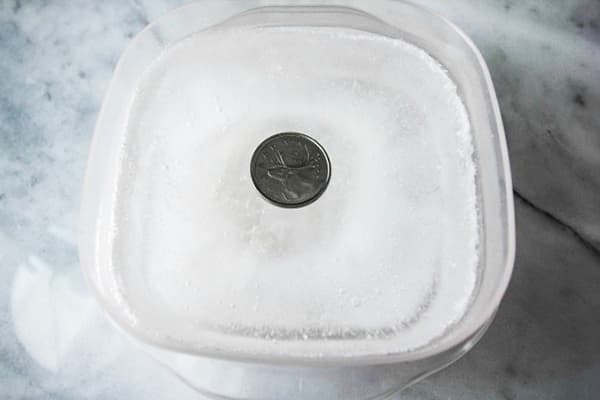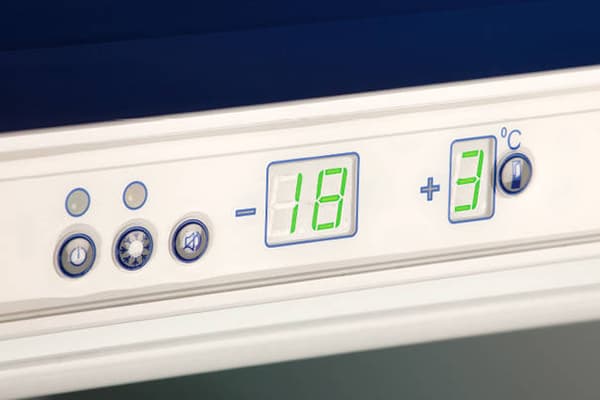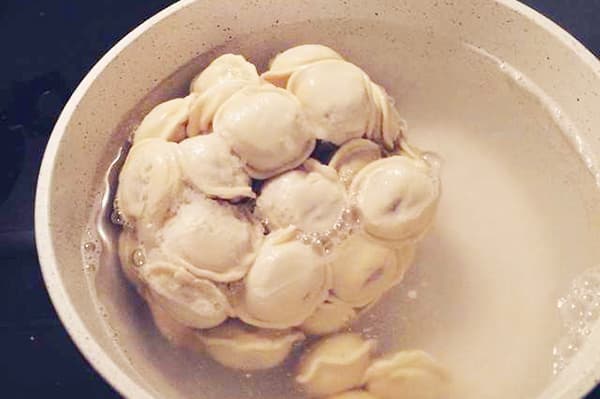No tricks: check how the freezer works with a coin
Content:
The correct operation of the freezer is the key to the safety of the products stored in it, and therefore the health of all family members. There is a simple way to check with a coin how the freezer works. Such verification does not take much time and does not require sophisticated equipment, but gives a reliable result.
Validation algorithm
To make sure that the refrigerator worked in strict accordance with the program laid down, do a simple verification procedure:
- Draw water into dishes that are resistant to temperature changes. For example, a small container made of food-grade plastic is suitable. You can’t take a glass beaker for the test: expanding, the water will cause cracks on its walls.
- Put a bowl of water in the freezer. Wait until all the water goes ice.
- Put a small coin on the ice. Leave a bowl of ice and a coin on top for the time during which you want to check the operation of the freezer.
If during the experiment the coin remained on the ice surface, it means that the camera works in strict accordance with the program laid down. If temperature differences occurred, the coin will sink in the formed water, and after freezing it will be in the thickness of the ice.
Such a check is carried out both when there is suspicion of incorrect operation of the freezer, and prophylactically.
A container with ice and a coin can be stored in the refrigerator constantly, monitoring the position of the coin every 3-4 days. If you find that the refrigerator has defrosted, clean it from perishable foods and call the wizard to determine the cause of the malfunction.
What is the danger of improper operation of the freezer?
The main function of the freezer is to maintain a constant temperature. Depending on the set mode, it ranges from -12 ° C to -24 ° C. This temperature is optimal for storing frozen foods: chicken, fish, vegetables, etc. It prevents the development of putrefactive bacteria, and slows down the oxidation of nutrients with atmospheric oxygen.
A properly functioning freezer is an indispensable assistant in the kitchen. It is used not only for storing food, but also for making ice, quickly freezing berries and fruits. However, far from always we can argue that the freezer really functions as intended.
If the camera does not work correctly, it can periodically turn off. During downtime, the temperature rises to values sufficient so that the products begin to defrost. However, then the camera turns on again, the temperature in it drops, the products are frozen again. At first glance, such work cannot be distinguished from normal functioning.
However, such a regime can lead to a whole set of unpleasant consequences:
- Periodic thawing and freezing leads to loss of consumer and taste properties. For example, semi-finished products (dumplings, dumplings, khinkali) and frozen vegetables freeze at temperature changes into one practically inseparable lump.
- The appearance of unpleasant odors or tastes in products is not excluded.
- Possible loss of stability with some mixtures (jellied meat, jelly, ice cream). When the temperature drops, water “snaps” from them, which sharply reduces the taste.
- The most dangerous is the development of bacteria in food that can contaminate food with toxic metabolic products.The action of certain microorganisms can make food dangerous to the health of those who eat it.
On the packaging of many products (for example, crab sticks), a warning is displayed: "do not re-freeze!" Such products most often become the site of the development of dangerous bacteria, so they should be immediately thrown away if the refrigerator has defrosted for any reason.
Cause for concern
There may be several reasons for the malfunction of the refrigerator: voltage drop, temporary power outage, failure of the control relay. The unstable operation of the freezer is especially dangerous if the device remains unattended for a long time (for example, the owners are absent in the apartment for several days).
There are indirect signs that can help you find that the refrigerator has defrosted while it was unattended. You should be alarmed if you find:
- freezing into a lump of some portioned foods - dumplings, frozen vegetables, berries, mushrooms;
- the appearance of an ice crust on ice cream stored in the refrigerator;
- puddles of water on the surface of aspic, jelly and other colloidal products.
However, indirect signs appear only when the temperature drops in the chamber are significant enough and lasted long enough for the products to melt and then freeze again. Therefore, the simplest “indicator” in the form of ice and a coin will help in time to identify problems and do everything possible for the normal operation of the freezer.


